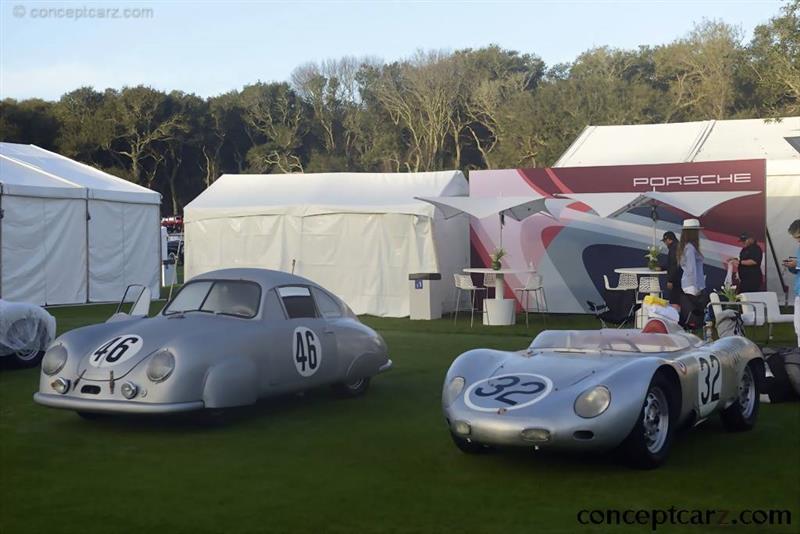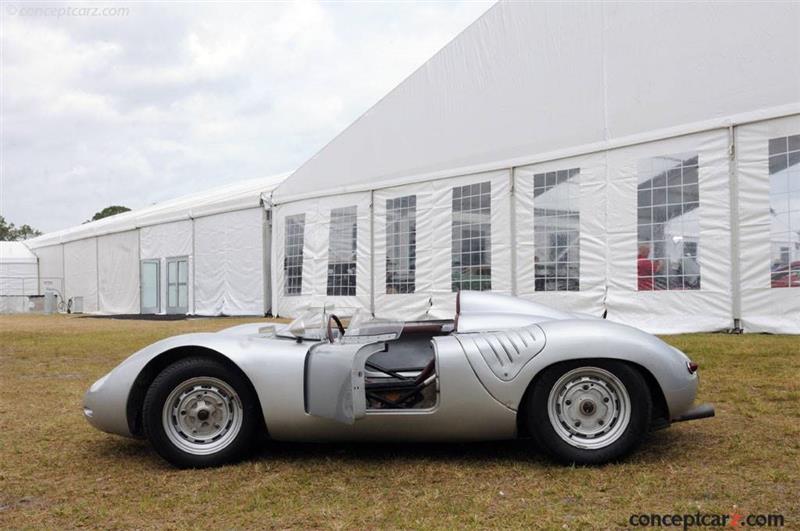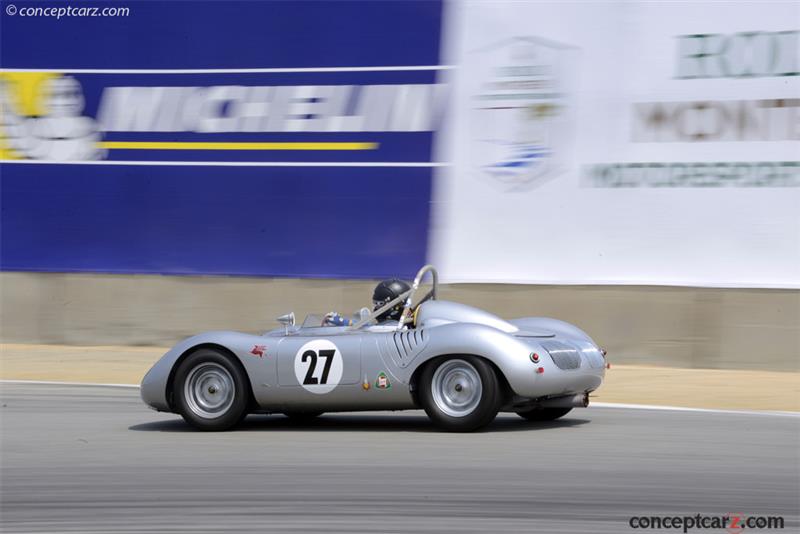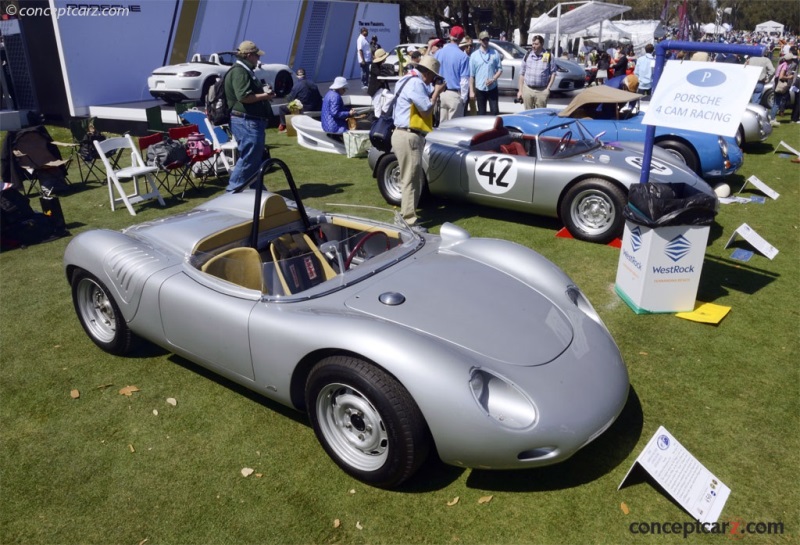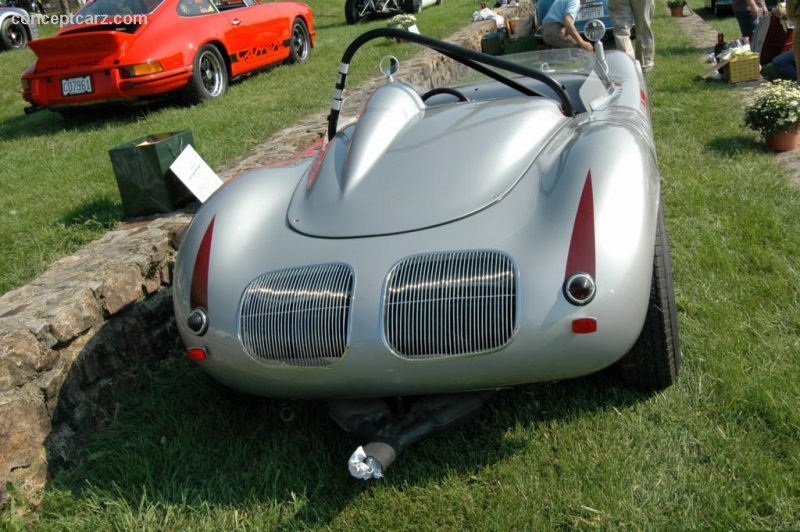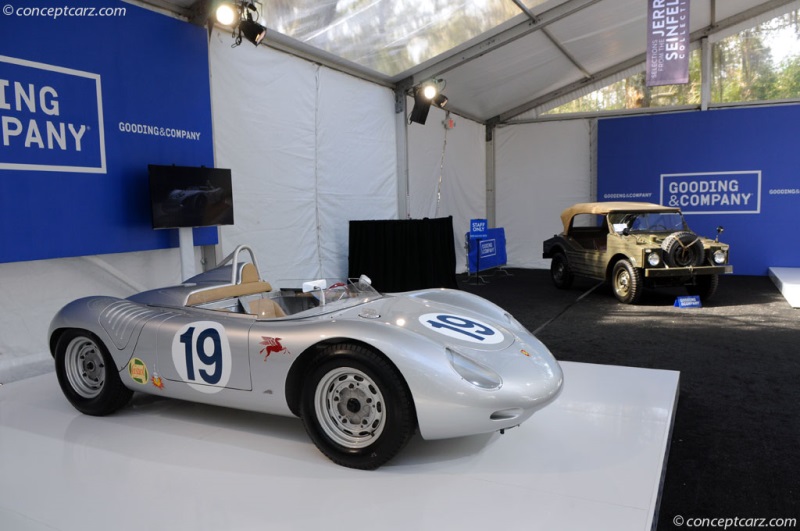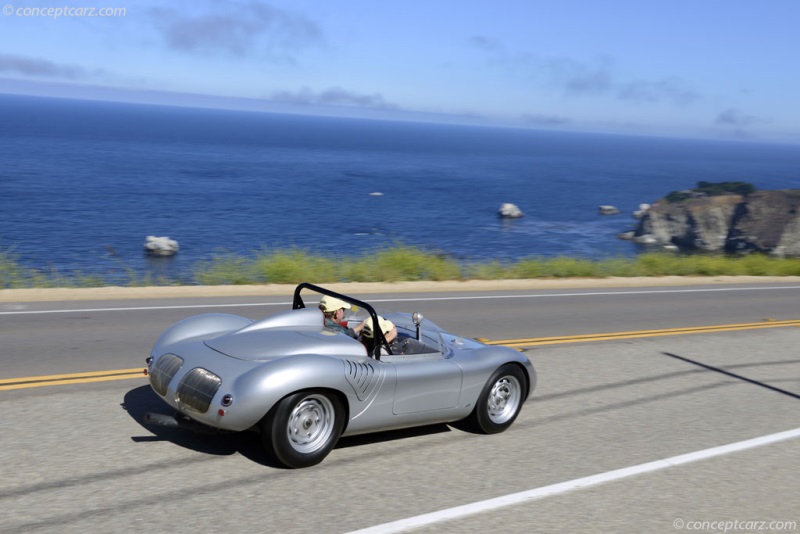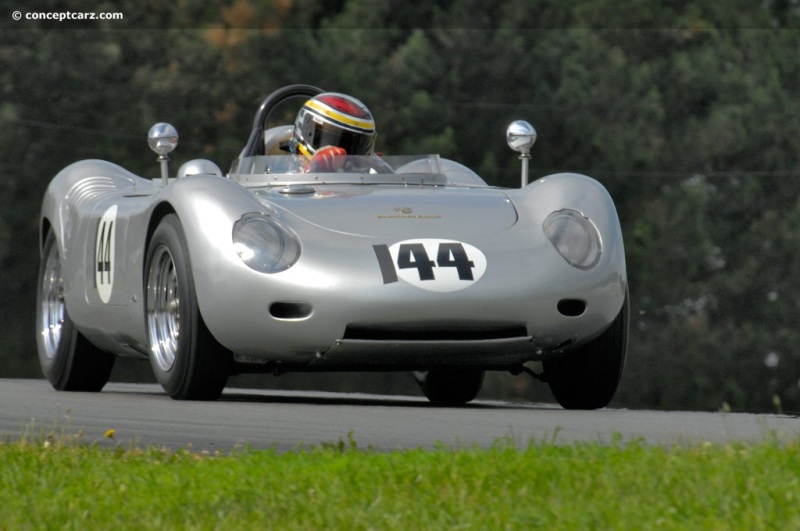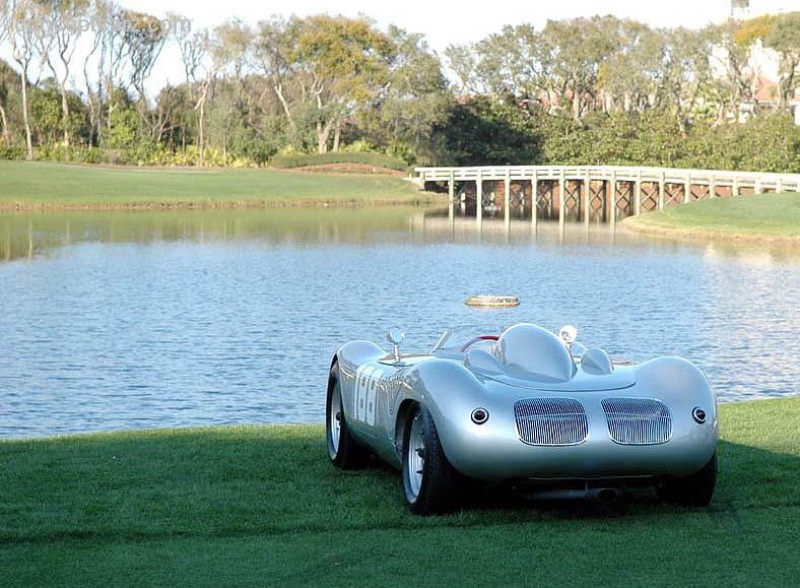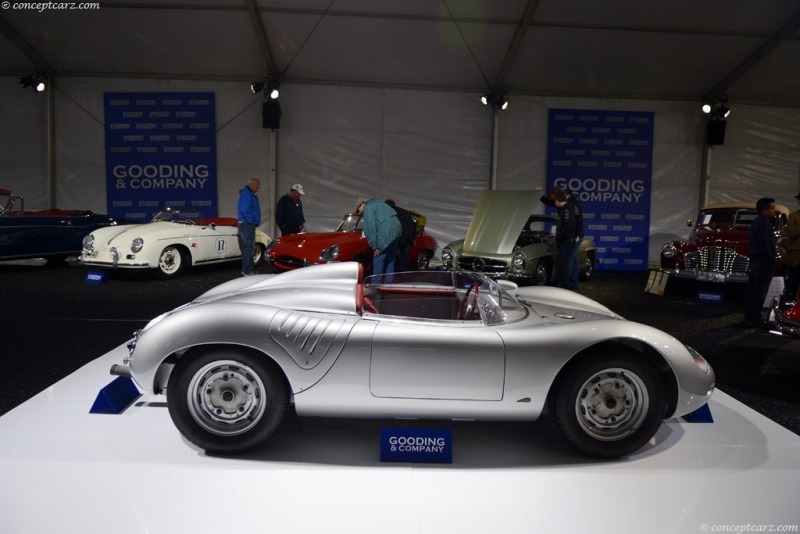Prior to World War II, the German government had begun the development of the 'people's car,' conceived as the KdF-Wagen (Kraft durch Freude, Strength through Joy), the Volkswagen. It was a utilitarian vehicle with two doors and powered by a 985cc engine developing 24 horsepower. Its design potential was demonstrated when in 1939 Porsche was asked to build a streamlined coupe version on the Volkswagen platform. The purpose of the Typ 60K10 was to compete in a proposed race from Berlin to Rome. However, the September 1939 race date never transpired due to the German invasion of Poland on September 1.
Roadster
Chassis #: 718-030
View info and historyDuring the war and between war contracts, the Porsche design bureau pursued competition projects. Following the war, a contract was obtained to design a Grand Prix car for Piero Dusio's Cisitalia. The resulting design and mechanical configuration reflected much of the work Porsche had done pre- and during- the war.Typ 356
1948 brought about the Typ 356, number according to the succession of Porsche designs projects (the KdF-Wagen of a decade earlier was design number 60). The Typ 356 proceeding significant design and development work, bringing the Porsche sports car into a reality. Using inspiration from Piero Dusio's production racing cars, the D46, and sports cars, the 202, Porsche's latest design project was intended to be a low production Volkswagen sports car. Instead of a rear-engine layout, it used a mid-engine configuration with the engine located behind the driver and in front of the rear axle, similar to the Auto Union Type C and D, and the postwar Cisitalia Grand Prix cars. It used a tubular space frame chassis with a Volkswagen-sourced trailing arm torsion bar front suspension, but with the driveline and rear suspension turned around, the torsion bar trailing arms became leading arms attached to a frame extension. The 1,131cc engine received a higher compression ratio, dual carburetors, and modified cylinder heads resulting in 40 horsepower. Porsche's Irwin Komenda penned the roadster body and many of the design cues would continue on future Porsche models.Due to the labor-intensive process of hand-building the tube frame automobile, the mid-engined 356 roadster was replaced by a new Volkswagen-based design called the 356/2. Typ 547 Engine
The 4-cam Typ 547 engine, designed by Ernst Fuhrmann, was introduced in 1952 and first used in April of 1953 in an updated 550 Spyder chassis. The engine design allowed for large intake and exhaust valves in the hemispherical combustion chambers, with the four overhead camshafts driven by shafts and bevel gears operating valve stems through interposed fingers. Three roller bearings rotated the 10-piece crankshaft built by Hirth and the connecting rods, with all moving parts lubricated by a dry-sump system with an external reservoir. Air cooling was employed primarily to the cylinder heads and a large oil capacity helped with engine cooling. Combustion was through dual spark plugs with dual coils and distributors. Typ 550 Spyder
The 550 Spyder chassis used a ladder frame with tubular side members that was underslung at the rear, with the tried-and-true torsion bar trailing arm front suspension working in concert with a new torsion bar-sprung trailing arm rear suspension. Among the accolades achieved by the 550 Spyder was a class victory in the 1954 Carrera Panamericana piloted by Hans Herrmann. Near the close of 1954, Porsche began building 'production' Spyders for direct sales to customers, known as the 1500/RS Spyder. They wore coachwork by Wendler and came with a ZF-built fully synchronized 4-speed transaxle, and the Typ 547 4-cam engine.
Roadster
View info and historyThe next iteration of the 550 was the 550A, complete with a lightweight space frame chassis of thin wall tubing. It weighed 95 pounds and was three times stiffer in torsion and 5x stiffer in bending than the preceding chassis it replaced. This eliminated the need for body mounting structures and reduced body weight by 30-percent from the 550. The improved Typ 547 engine, which now drove the distributors directly from the front of the crankshaft, developed 135 brake horsepower with Weber carburetors. The rear suspension used a low-pivot design with a lower roll center, and longer trailing arms helped while cornering by reducing camber change. The Porsche 550A finished fifth overall and first in its class at Le Mans, and was first to the finish line at the Targa Florio in 1956. Porsche 718 RSK
Next came the RSK, the ultimate development of the Spyder, raced by Porsche between 1957 and 1962. It earned the nickname 'RSK' due to its front suspension torsion bar tubes sloping down to meet the lower torsion bar tubes at their mid-points, forming the letter 'K.' This design was created to help with cornering, but it did not survive testing, however, the nickname continued. The 'K'-shaped setup was replaced by parallel torsion bars, but the steering box remained at the center of the front track with equal length track rods. A benefit of the double U-joined steering column was the ability to have the steering wheel mounting position offset or centered. The rear suspension was redesigned with Watt's linkage replacing the prior trailing arm setup with two radius rods, one from the top and the other from the bottom of the hub securely positioning the rear wheels. Tubular shock absorbers with concentric coil springs replaced the rear torsion bars.
RoadsterChanges were made to the body, making it slimmer, lower, and with a rounded nose. Due to the number of significant changes, Porsche gave it a new project number, 718. It was initially a two-seater 1.5-liter sports car that was later adapted to compete in a number of different formulas. Due to regulation changes throughout the years, the car was updated and changed to comply with the new rules. In 1957, Formula Two was reinstated as the Junior Formula to Formula One. The rules called for un-supercharged 1500cc engines with full envelope or open-wheeled cars eligible. Porsche achieved success with both G50s and RSKs. 
Roadster
Chassis #: 718.007
View info and historyThe racing debut for the Porsche 718 was in 1957 at the 24 Hours of LeMans where it was piloted by Umberto Maglioli and Edgar Barth. Unfortunately, the car failed to finish the race due to an accident. It returned to LeMan a year later where it finished third overall and first in class. The class-winning car, finishing third overall, was powered by a Weber carbureted 1,587cc Typ 547/3 engine and driven by Jean Behra and Hans Herrmann. Later in the season, Behra finished fourth at Riverside in the Los Angeles Grand Prix for sports cars.At the Targa Florio, Jean Behra finished second and a year later, it was the overall winner at the race. A 718 also won the European Hill Climb Championship in 1958 and 1959.35 RSK Spyders were built with approximately six with center-steering, with four factory-built with the combination of center- and offset-steering in the same car. The adaptability, design pedigree, and racing lineage resulted in an enviable competition record. It was a true giant-killer and continued the foundation and evolution for future success, and set the tone for four decades of competition dominance during the pinnacle of international sportscar racing.
by Daniel Vaughan | May 2011
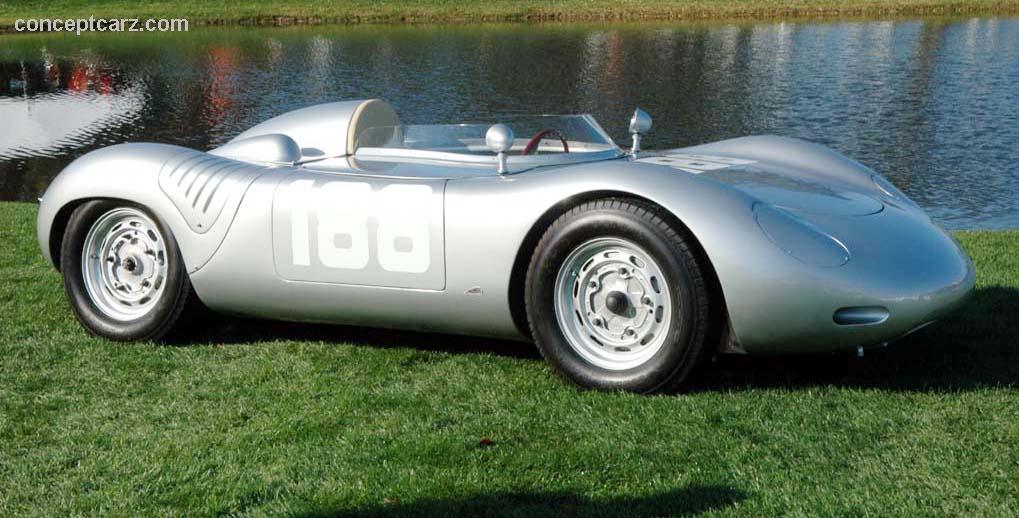
Roadster
Chassis #: 718-030
View info and history
1948 brought about the Typ 356, number according to the succession of Porsche designs projects (the KdF-Wagen of a decade earlier was design number 60). The Typ 356 proceeding significant design and development work, bringing the Porsche sports car into a reality. Using inspiration from Piero Dusio's production racing cars, the D46, and sports cars, the 202, Porsche's latest design project was intended to be a low production Volkswagen sports car. Instead of a rear-engine layout, it used a mid-engine configuration with the engine located behind the driver and in front of the rear axle, similar to the Auto Union Type C and D, and the postwar Cisitalia Grand Prix cars. It used a tubular space frame chassis with a Volkswagen-sourced trailing arm torsion bar front suspension, but with the driveline and rear suspension turned around, the torsion bar trailing arms became leading arms attached to a frame extension. The 1,131cc engine received a higher compression ratio, dual carburetors, and modified cylinder heads resulting in 40 horsepower. Porsche's Irwin Komenda penned the roadster body and many of the design cues would continue on future Porsche models.Due to the labor-intensive process of hand-building the tube frame automobile, the mid-engined 356 roadster was replaced by a new Volkswagen-based design called the 356/2. Typ 547 Engine
The 4-cam Typ 547 engine, designed by Ernst Fuhrmann, was introduced in 1952 and first used in April of 1953 in an updated 550 Spyder chassis. The engine design allowed for large intake and exhaust valves in the hemispherical combustion chambers, with the four overhead camshafts driven by shafts and bevel gears operating valve stems through interposed fingers. Three roller bearings rotated the 10-piece crankshaft built by Hirth and the connecting rods, with all moving parts lubricated by a dry-sump system with an external reservoir. Air cooling was employed primarily to the cylinder heads and a large oil capacity helped with engine cooling. Combustion was through dual spark plugs with dual coils and distributors. Typ 550 Spyder
The 550 Spyder chassis used a ladder frame with tubular side members that was underslung at the rear, with the tried-and-true torsion bar trailing arm front suspension working in concert with a new torsion bar-sprung trailing arm rear suspension. Among the accolades achieved by the 550 Spyder was a class victory in the 1954 Carrera Panamericana piloted by Hans Herrmann. Near the close of 1954, Porsche began building 'production' Spyders for direct sales to customers, known as the 1500/RS Spyder. They wore coachwork by Wendler and came with a ZF-built fully synchronized 4-speed transaxle, and the Typ 547 4-cam engine.
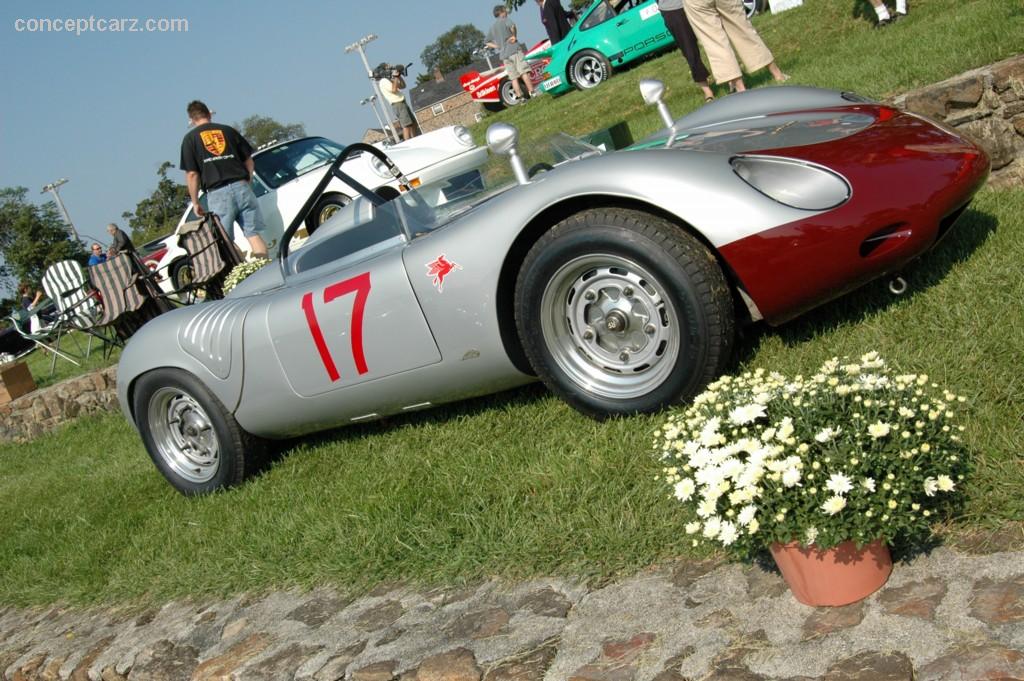
Roadster
View info and history
Next came the RSK, the ultimate development of the Spyder, raced by Porsche between 1957 and 1962. It earned the nickname 'RSK' due to its front suspension torsion bar tubes sloping down to meet the lower torsion bar tubes at their mid-points, forming the letter 'K.' This design was created to help with cornering, but it did not survive testing, however, the nickname continued. The 'K'-shaped setup was replaced by parallel torsion bars, but the steering box remained at the center of the front track with equal length track rods. A benefit of the double U-joined steering column was the ability to have the steering wheel mounting position offset or centered. The rear suspension was redesigned with Watt's linkage replacing the prior trailing arm setup with two radius rods, one from the top and the other from the bottom of the hub securely positioning the rear wheels. Tubular shock absorbers with concentric coil springs replaced the rear torsion bars.
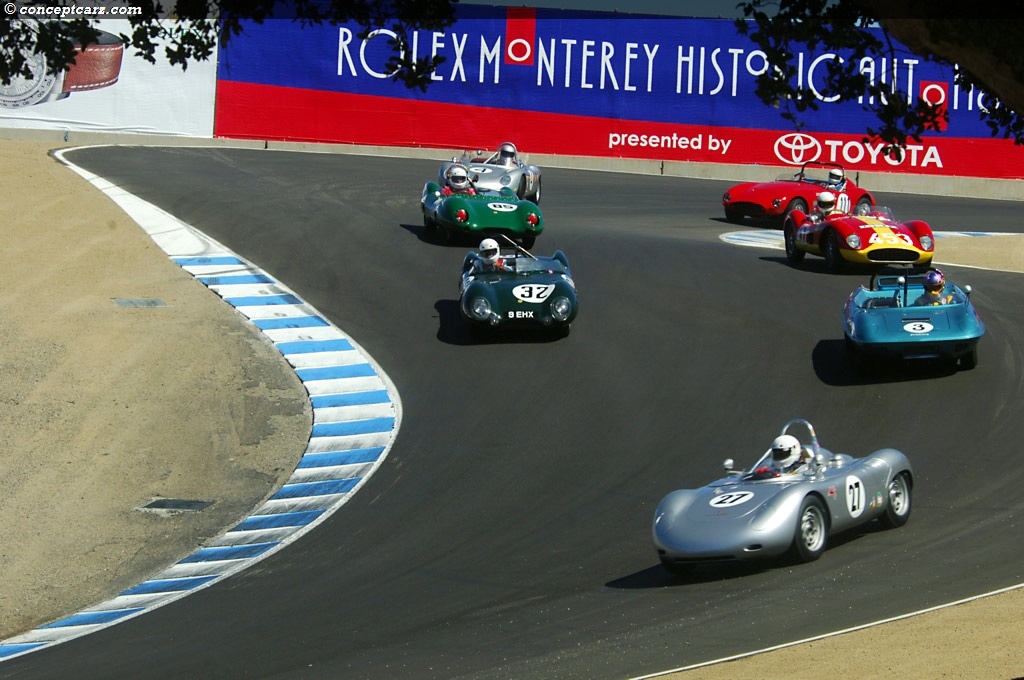
Roadster
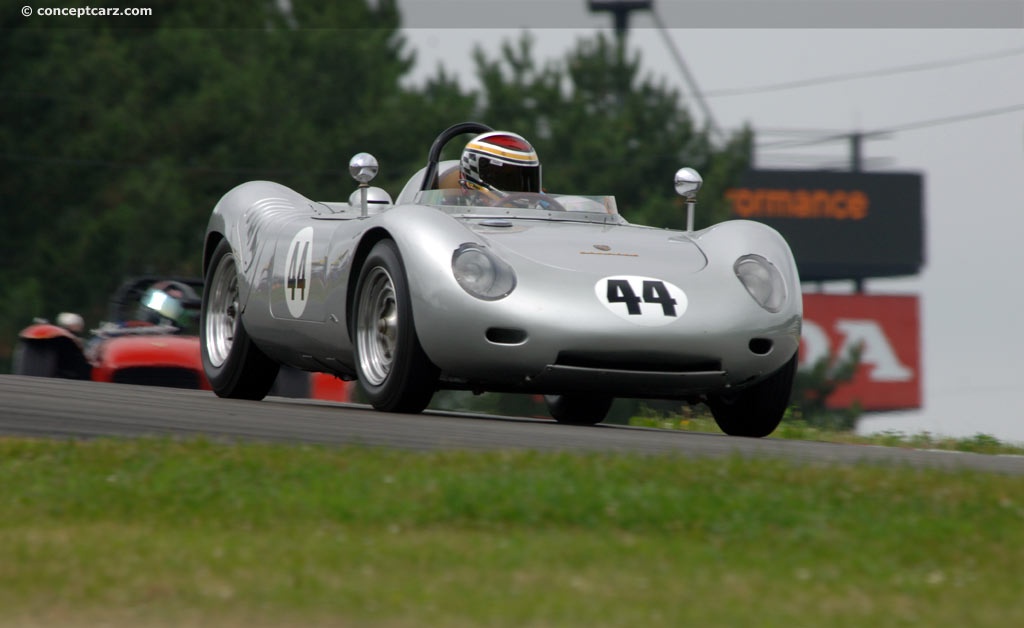
Roadster
Chassis #: 718.007
View info and history
by Daniel Vaughan | May 2011
Formula 2 Vehicles
Similar Vehicles
1959 Porsche 718 RSK Vehicle Profiles
Recent Vehicle Additions
Related Automotive News

Broad Arrow Announces Historic 1959 Porsche 718 RSK Spyder 'Lucybelle III' as Highlight Consignment for Upcoming Amelia Island Auction this March 1-2, 2024
Broad Arrow Auctions, a Hagerty (NYSE HGTY) company, is thrilled to announce the consignment of the historic 1959 Porsche 718 RSK Spyder Lucybelle III, chassis 718-024, (estimate %243,500,000 - %244,500,000), to its Amelia Island Auction, being...

From Lucybelle to DHL: Historic Porsche Competition Cars Race to Gooding & Company's Pebble Beach Auctions
The very best of Porsche excellence will come to Pebble Beach with a 1959 Porsche 718 RSK, a 1969 Porsche 90802, a 2007 Porsche RS Spyder Evo, and more.
Gooding %26 Company, the official auction house of the Pebble Beach Concours dElegance®,...

Gooding & Company Amelia Island Auction Preview
Gooding %26 Company, the auction house acclaimed for selling the worlds most significant and valuable collector cars, will hold its annual Amelia Island Auction on Friday, March 7 on the Omni Amelia Island Plantation.
David Gooding, President and founder...

From Lucybelle to DHL: Historic Porsche Competition Cars Race to Gooding & Company's Pebble Beach Auctions
The very best of Porsche excellence will come to Pebble Beach with a 1959 Porsche 718 RSK, a 1969 Porsche 90802, a 2007 Porsche RS Spyder Evo, and more.
Gooding %26 Company, the official auction house of the Pebble Beach Concours dElegance®,...
RRDC VOTES IN 26 NEW MEMBERS FOR 2015
HILLIARD, Ohio (Oct. 23, 2015) - Twenty-six race-car drivers and motorsports professionals have been voted into the Road Racing Drivers Club in 2015. The group includes 11 Regular Members from the open-wheel and sports-car racing ranks, 10 Associate...
Scuderia Ugolini: 1959 Formula One Season
While the name Ferrari is recognized the world-over, Ugolini, on the other hand, is only a name recognized by those very knowledgeable of motor racing and football. However, the name is nearly as vitally important to the world of motor sport. In 1959,...
RRDC VOTES IN 37 NEW MEMBERS FOR 2013
HILLIARD, Ohio (Nov. 7, 2013) - Thirty-seven race-car drivers and motorsports professionals have been voted into the Road Racing Drivers Club in 2013. The group includes 13 Regular Members from the open-wheel and sports-car racing ranks, 20 Associate...

1964 Nurburgring 1000 Kilometers: Survive for One Last Victory
During the late 1950s, Richie Ginther would begin a relationship with John von Neumann and this partnership would result in one of the most dominant periods of American sportscar racing in which Ginther and Porsche would be virtually unbeatable. Nearly...









































